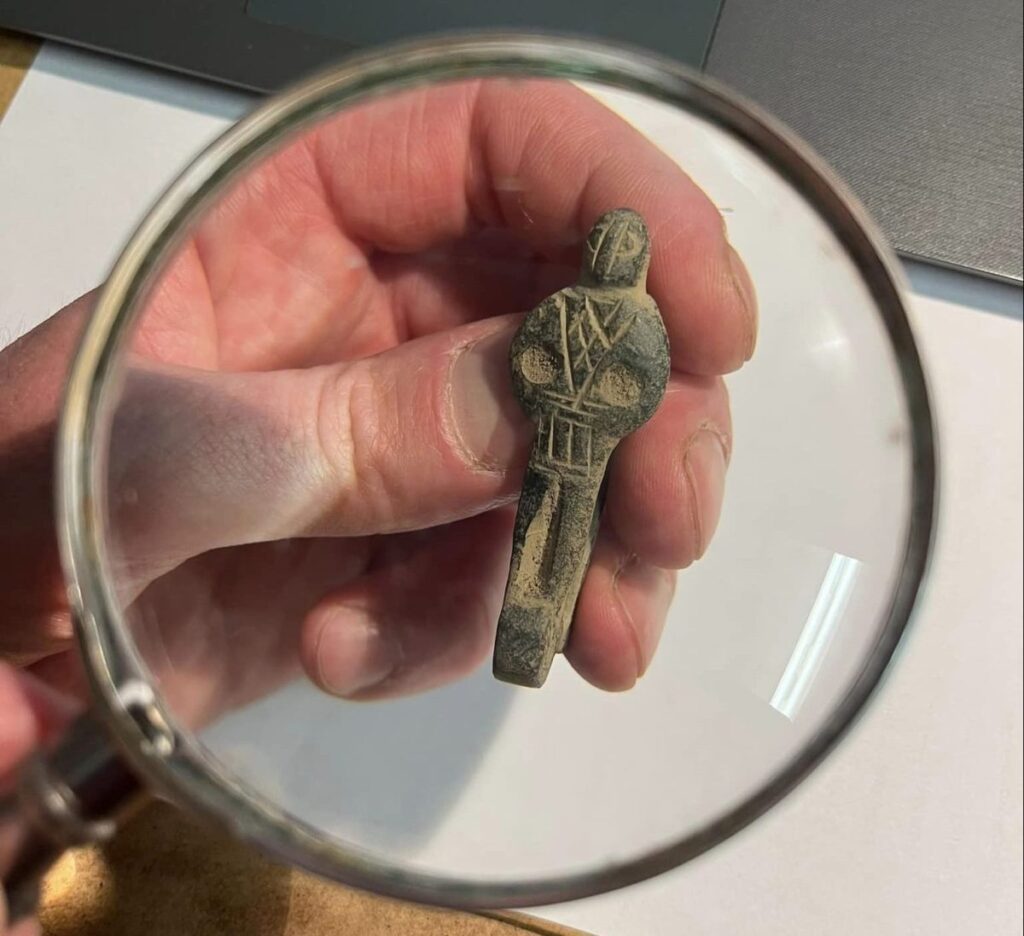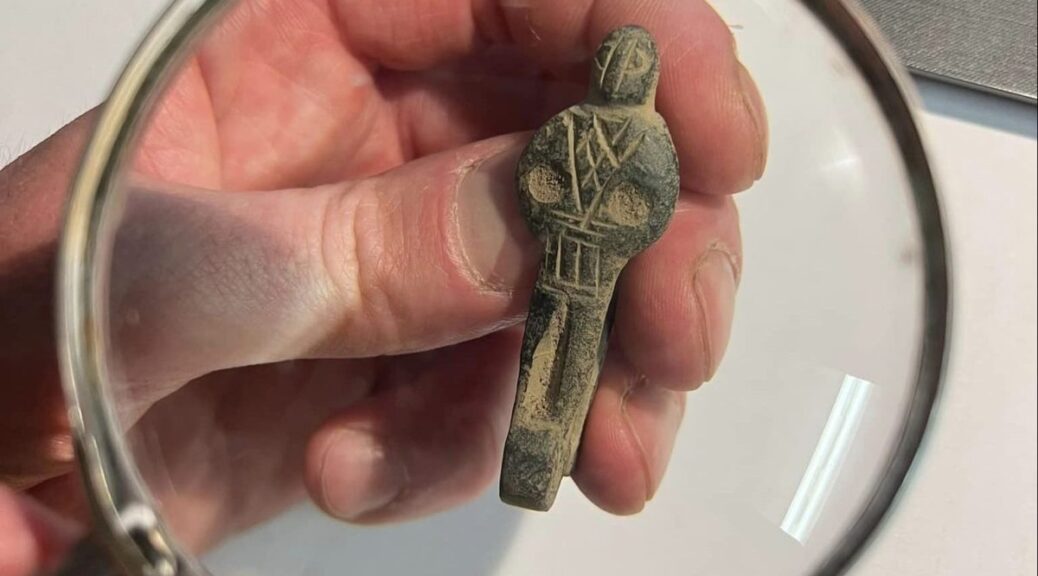An extraordinary medieval belt loop found near Kamień Pomorski in Poland

A late medieval belt loop for hanging keys or a bag was found near the town of Kamień Pomorski in the West Pomeranian Voivodeship in northwestern Poland. So far, only 15 artifacts of this type have been discovered in Europe.
The discovery was announced on social media by the Museum of the History of the Kamieńska Land. The director of the museum, archaeologist Grzegorz Kurka, described the find as “extraordinary“.
In German literature, artifacts of this type are called anthropomorphic Gürtelhaken, Figürliche Schlüsselhalter, and Schlüsserhaken. The 56 mm high loop is in very good condition.
The front panel has an anthropomorphic form. The figure’s head is schematically marked. Hands are on hips. Protruding from the hip, they form an arc with holes of 4 mm in diameter.
There are diagonal and horizontal cuts visible on the torso and hips – schematically creating a costume typical of the late Gothic era. Below the costume, there is a vertical hole 13 mm long, and directly below it a hole probably intended for hanging keys or a purse (hole 4 mm in diameter).

These hooks or clamps can be divided into two large groups: (loving) couples of men and women embracing (dancing?) and single men who look at the viewer and, in frequent cases, put their hands on their hips.
Based on the circumstances of the find and studies of the clothing components, some of which are depicted in much greater detail, they are usually dated to the second half of the 15th century or the first half of the 16th century. In the specialist literature, Nuremberg is usually assumed to be the place of manufacture.

Based on better or completely preserved examples, we know that a screwable axle was attached through the sleeve-like opening running across the bottom of the figures, to which a mostly oval bracket was attached, as is still the case today with some key rings or key rings.
This also led to the interpretation that such hooks were worn (clipped on) to strong leather belts, but could also be removed at any time. Keys, pouches, or small bags made of fabric or leather could be attached to the hanger.
Copperplate engravings and woodcuts from the 15th and 16th centuries show that men and women carried all kinds of things on their belts, including knives, cutlery, and individual spoons.
